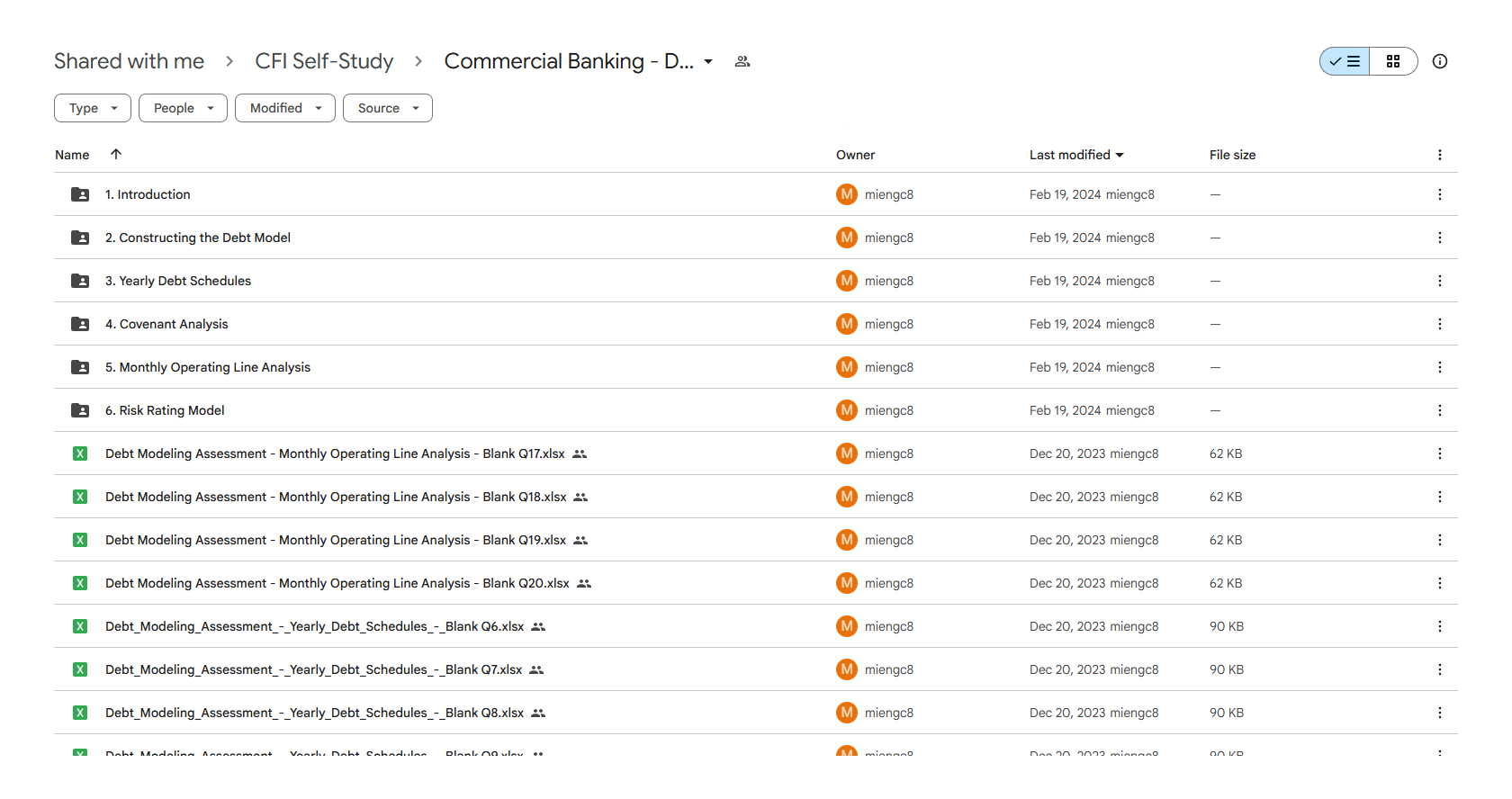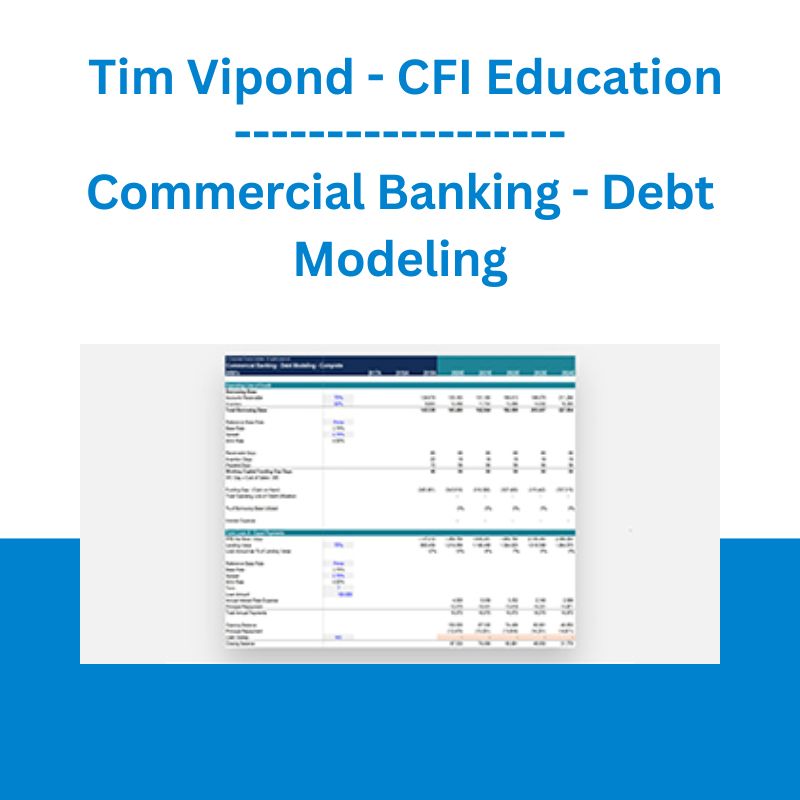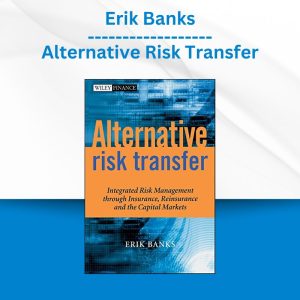*** Proof of Product ***

Exploring the Essential Features of “Commercial Banking – Debt Modeling – Tim Vipond – CFI Education”
Learn to model debt like a pro! Excel as a credit analyst by understanding and performing this critical skill!
- Build debt schedules
- Construct a model to analyze operating credit
- See a risk rating model at work
- Get hands-on practice putting covenants to work
Overview
Commercial Banking – Debt Modeling Course Overview
This course covers the key components of building a debt model commonly used by commercial banks in assessing a borrower’s cash flows and performing covenant analysis. In this course, we will discuss the differences between operating finance (operating line of credit) and term lending (term loans). We will walk through the major components of a debt model, including the yearly debt schedules, covenant analysis, monthly operating line analysis, and a quick overview of a risk rating model. By the end of this course, you should be able to construct a fully-linked debt model which entails the cash flow forecast of a borrower, its debt capacity, the impact of cash sweep, and any early warning signs of a covenant breach.
Commercial Banking – Debt Modeling Learning Objectives
Upon completing this course, you will be able to:
- Differentiate between operating finance (operating line of credit) and term lending (term loans)
- Understand the benefits of using different types of credit facilities
- Build a yearly-debt schedule laying out the different types of debt drawn, the interest expense, and the principal repayments
- Perform covenant analysis to identify early warning signs and possibilities of breach
- Construct a monthly operating line analysis to determine the operating line drawn and the amount available based on margining
- Understand how the amount of leverage could impact a company’s risk rating
Who should take this course?
This Commercial Banking – Debt Modeling course is perfect for any aspiring credit analysts working in insurance, underwriting, rating agencies, commercial lending, corporate credit analysis, and other areas of credit evaluation. It is also a great elective course for anyone who would like to learn more about how commercial banks forecast the debt capacity and cash flows of borrowers.
What you’ll learn
Introduction
Introduction
What Is Debt Modeling and Why Use It
Download Course Materials
Operating Finance
Assessing the Quality of Accounts Receivable
Assessing the Quality of Inventory
Interactive Exercise 1
Operating Finance vs. Term Lending
Term Loan
Seniority
Interactive Exercise 2
Constructing the Debt Model
Key Structure and Steps for Model Building
Debt Model Components
Preview of Completed Debt Model
Yearly Debt Schedules
Building the Yearly Debt Schedules
Existing Debt – Opening and Closing Balances
Existing Debt – Interest and Principal Repayment
Term Loan A – Lending Value and Base Rate
Term Loan A – Interest, Principal Repayment, and Balance
Other Debt 1 (Equal Amortization) – Interest and Balance
Other Debt 1 – Principal Repayment
Other Debt 2
Operating Line of Credit – Borrowing Base and Working Capital Funding Gap Days
Debt Forecast
Operating Line of Credit – Funding Gap
Operating Line of Credit – Utilization and Interest Expense
Change in Line of Credit
Linking to Items in The Three Statements
Cash Sweep
Reviewing the Debt Schedules
Covenant Analysis
Covenant Analysis
Covenant Ratios
Working Capital Ratio
Total Debt to Tangible Net Worth
Funded Debt to EBITDA
Debt Service Coverage and Interest Coverage Ratio
Monthly Operating Line Analysis
Monthly Operating Line Analysis
Linking to the Yearly Model
Calculating Monthly Figures
Operating Line Analysis and Margining
Risk Rating Model
Risk Rating Model
Reviewing the Risk Rating Model
Download Completed Model
Summary
Qualified Assessment
Qualified Assessment
Please see the full list of alternative group-buy courses available here: https://lunacourse.com/shop/










 Emanuele Bonanni - My Trading Way
Emanuele Bonanni - My Trading Way  Crypto Dan - The Crypto Investing Blueprint To Financial Freedom By 2025
Crypto Dan - The Crypto Investing Blueprint To Financial Freedom By 2025  Jesse Livermore Trading System - Joe Marwood
Jesse Livermore Trading System - Joe Marwood  Erik Banks - Alternative Risk Transfer
Erik Banks - Alternative Risk Transfer  Atlas API Training - API 570 Exam Prep Training Course
Atlas API Training - API 570 Exam Prep Training Course  The Daily Traders – Exclusive Trading Mentorship Group
The Daily Traders – Exclusive Trading Mentorship Group